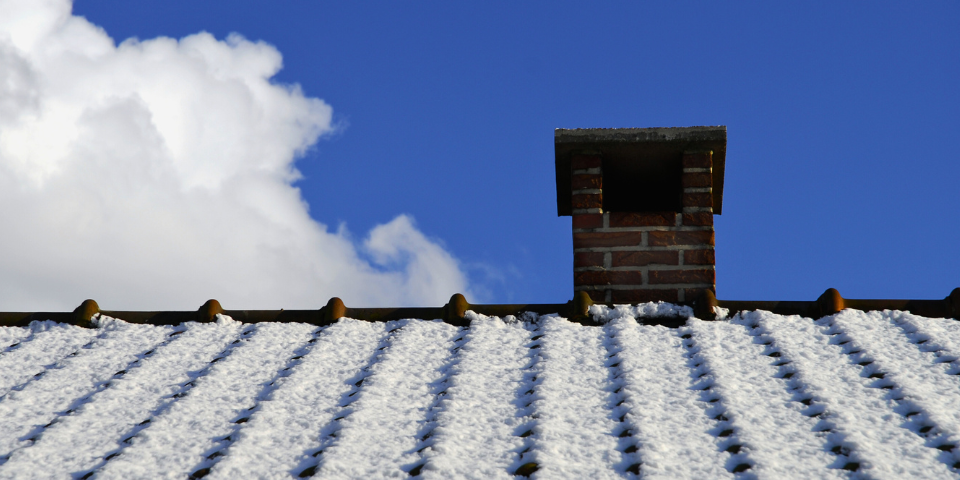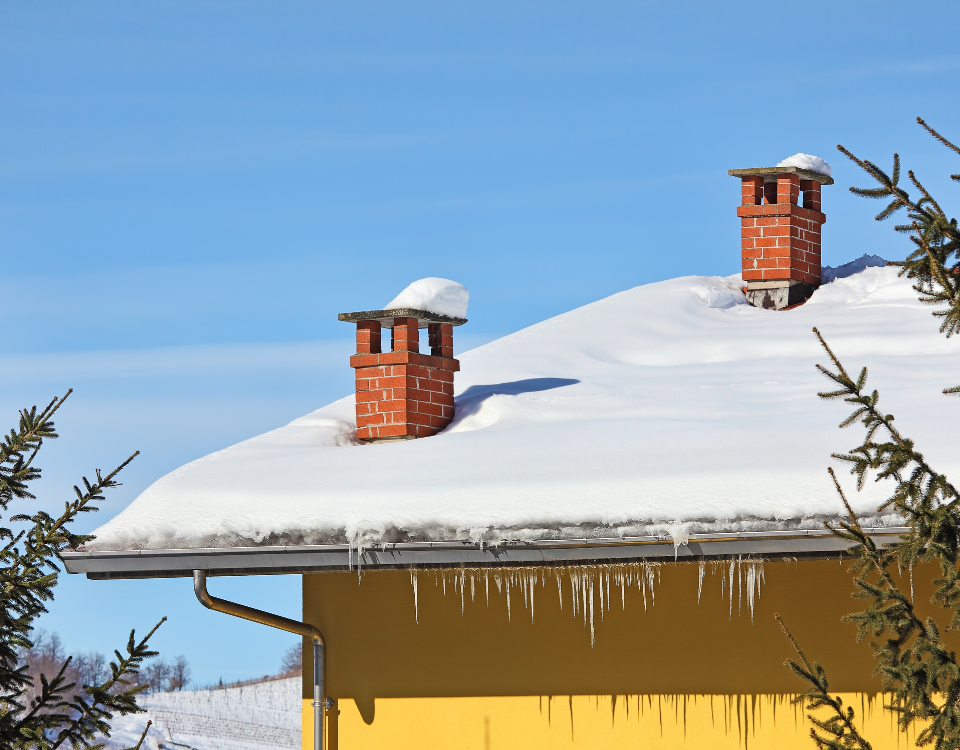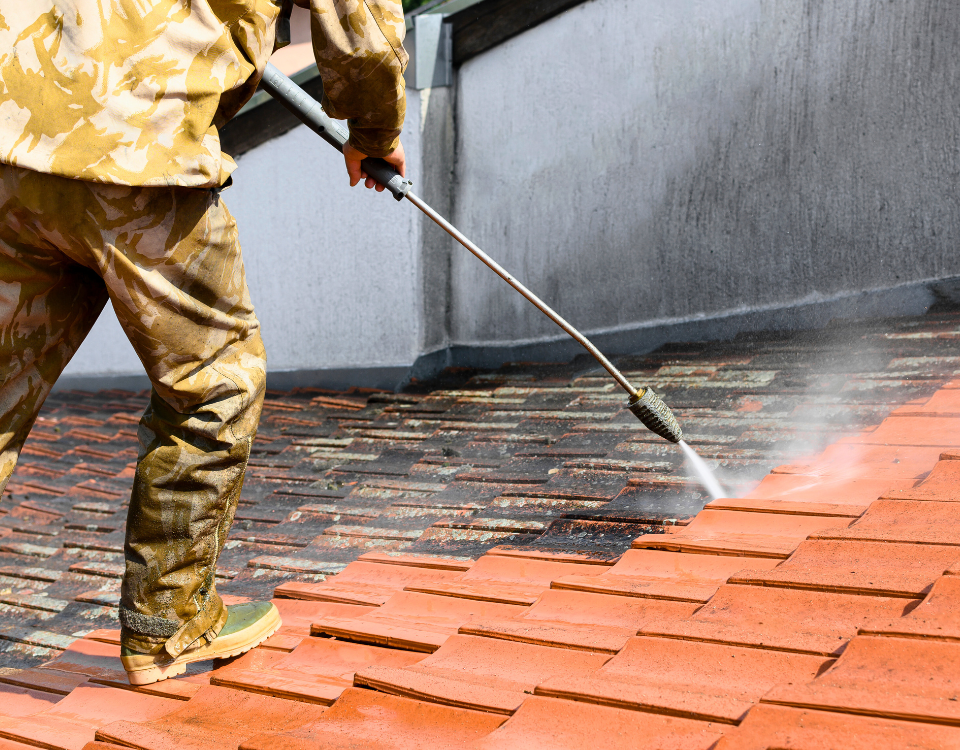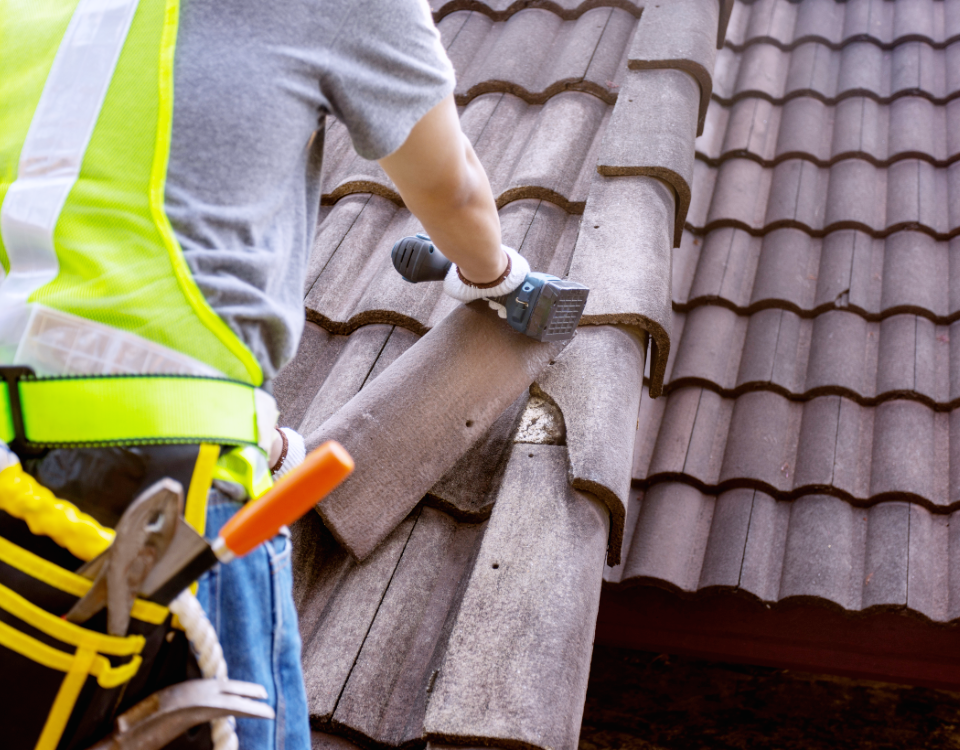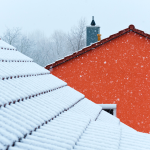
Can Roofing Be Done In Cold Weather?
January 8, 2023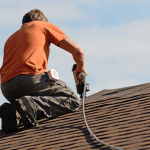
Is Your Roof Ready For Spring?
February 14, 2023Key Takeaways:
- Optimal Roofing Installation Temperatures: While roofing can technically be installed any time of the year, the ideal temperature range for installing asphalt shingles is between 40 to 80 degrees Fahrenheit.
- Impact of Temperature on Tools and Materials: Cold weather can affect the performance of tools like nail guns, as freezing temperatures can reduce air pressure, necessitating manual hammering of nails.
- Alternative Roofing Materials: Other roofing materials such as clay, metal, slate, and wood may be more suitable for extreme temperatures as they do not rely on adhesive undersides.
When it comes down to roofing, it is possible to install a new one at any time of the year. Yes, this means it can be the middle of the summer or the dead of winter. Either is possible. After all, if you’re in desperate need to replace your roof (maybe you’ve sustained some kind of damage following a winter storm, or you’re looking to sell your home and want to perform some desirable upgrades), it is absolutely possible to install your roof at any time of the year. But when is the optimal time to do so? Well, there are better times than others to install a roof. Better means the installation will run smoother, which, chances are, means it will be completed faster (and possibly at a lower price point, although there are different variables to consider when it comes to pricing).
When it comes down to you, you might wonder what temperature is too cold to put on a roof or if there is a desirable temperature to shoot for. Here is what you need to know about roofing temperatures and how it affects the roofing installation.
When Installing Asphalt Shingles
Asphalt shingles are the most popular kind of roofing material out there (although others are growing in popularity). This is because asphalt has one of the least expensive price points, the material is durable, and when taken care of, your roof will last several decades.
Most asphalt shingles possess an adhesive that will automatically activate and help seal the bond between the shingle and the surface below. This adhesive is activated at temperatures above 40 degrees. Now, if the temperature falls below 40 degrees, it is still possible to install the shingles, it just needs to be manually activated, which will slow down the installation process. It can take hours if not full days of extra installation time.
Nail Gun Performance
Compressed air is the driving force behind a nail gun. It is what fires the nail into the shingles and wood. When the outside air temperature drops below freezing, moisture within the air may begin turning to ice. This reduces the amount of air inside the compressor, which in turn reduces the pressure put out by the equipment. The reduced pressure may not completely fire the nail out, which means these nails will be sticking out of the asphalt. To correct this, the nails must manually be hammered down into the roof. Again, needing to follow the nail gun with a hammer to complete the installation takes additional time. From manually activating the asphalt to manually hammering in some of the nails, all of this makes installing an asphalt roof in sub 32-degree temperatures less than desirable.
Can It Be Too Hot to Install a Roof?
Much like installing a roof in sub-32-degree temperatures, it is not technically impossible to install a roof in extreme heat. However, once again focusing on asphalt shingles, it does come to a point where the temperature is too hot for optimal installation. As we mentioned earlier, the asphalt shingles have a self-activating adhesive on the bottom. Eventually, the temperature will become too hot, which can actually melt the adhesive, meaning the non-installed shingles may begin sticking together and causing all kinds of problems. This begins around the 80-degree mark.
So, the ideal temperature for installing a roof will be below 80 degrees. Naturally, as individuals who will be on the roof and in the sun the entire time, we would much rather have the temperature down in the 50s or 60s. Even the low 70s are good and comfortable. But the closer the thermostat inches toward 80, the more potential problems we might run into with the melting adhesives.
High Humidity
One thing to keep in mind is the humidity. Humidity can wreak havoc on the adhesive, regardless of the temperature. It makes everything sweat, which in turn makes it especially difficult to ensure there is a proper bond between the shingles and the surface. So, ideally, there will be a low-humidity day for our roofing installation. Of course, it is difficult to forecast the humidity levels when booking weeks, if not months, in advance (which is highly recommended when it comes to installing a roof during peak season).
Various Materials For Various Weather and Temperature Types
Now, we covered asphalt because this is the most common roofing material. However, other materials are viable and may even be easier. Roofing materials that do not have adhesive on the underside can be installed at a higher temperature. Clay, metals, slate, and wood are all options that do not have the same kind of adhesive underside as asphalt, although you should consult us first to make sure your roof is even able to hold concrete or clay tile.
Likewise, if the temperature is under 40 degrees, a building material that does not require a heavy reliance on a nail gun won’t run into the same kind of performance issues. Not that you should make your roofing decision based specifically on the temperature outside and how long it might or might not take to install.
If you are interested in learning more about the other roofing material options, or if you want to know about the different benefits of these materials, feel free to contact us whenever you have a free minute.
Free Consultation Today
Are you interested in learning more about the roofing services we offer here at Charlotte Roofing Specialists? Maybe you have questions you first want answered, or you want to look into the various roofing materials that are available and at your disposal. Whatever your questions might be, or whenever you are in need of a new roof installation, all you need to do is give our customer service staff at Charlotte Roofing Specialists a call or email. Whatever your questions might be, and no matter your timeline, we are here to address your roofing needs.


